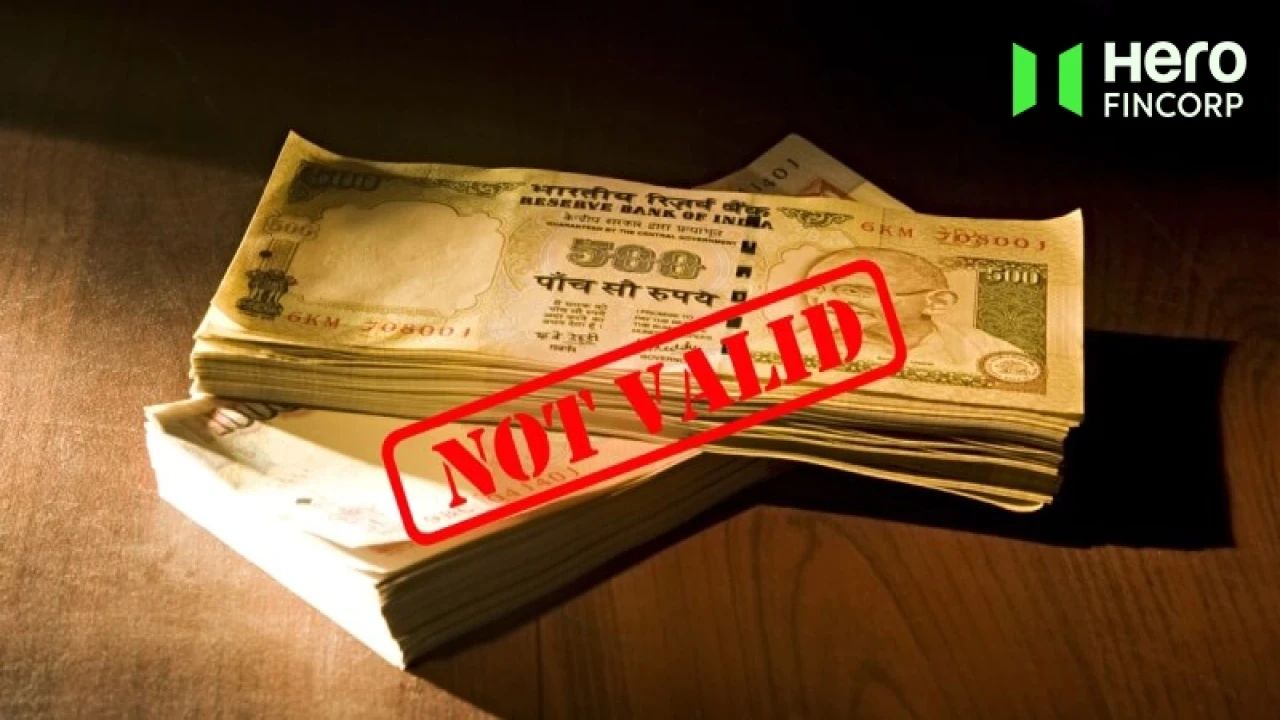Demonetization, its Advantages & Points to Note

Everyone in India and abroad was surprised by the government's announcement to replace existing currency notes of Rs. 500 and Rs.1,000, which accounts for almost 85% of the currency in use. People are waiting for long hours outside ATMs/ banks, and facing difficulties while trying to exchange existing currency and withdrawing new currency notes. The public reaction to this Demonetization Drive has been largely positive but there are a few naysayers as well. Some consider it to be a great move, in fact a masterstroke, which would help in curbing corruption in the future; others are anxious about the impact such a large scale transition would have on everyday lives of citizens due to lacking financial liquidity. If you would like to understand Demonetization and its advantages, then continue reading further.
Defining Demonetization
Demonetization is an act of stripping a currency of its status as legal tender. This move is usually taken when a country’s old currency is replaced with a new one. This is a bold move by the Prime Minister and people barely had hours to react. However, this isn’t the first time this has happened, in 1946 when the Reserve Bank of India demonetized the then under-circulation Rs 1,000 and Rs 10,000 currency notes. Higher denomination banknotes of Rs 1,000, Rs 5,000 and Rs 10,000 were introduced eight years later in the year 1954. These very notes were also demonetized by the Morarji Desai Government in 1978.
Advantages of Demonetization:
-
Increases Deposit Base & Savings: Currency demonetization increases deposit base and savings as individuals will deposit more and store less physical currency at home.
-
Improves Monetary Transmission & Reduces Lending Rates: With currency demonetization, there will be a movement of currency from individuals to banks and Financial Institutions. The rise in deposit rates would put all of this money into circulation. The cost of funds will reduce for Banks/ FIs, and the overall lending rates for various trade, business and commerce activities would reduce.
-
Creates Room For Monetary Accommodation: With improved monetary transmission, there will be space for a far more liberal monetary policy, which would result in a further reduction of interest rates in the future. Most analysts are already projecting a lower repo rate in the coming months.
-
Direct Boost to The Jan Dhan Yojana: Jan Dhan Yojana accounts have a very high number of dormant or unused accounts. These accounts have suddenly seen a spike in usage, and individuals who’ve had these will finally start using them and it might help them in inculcating banking habits.
-
Added Support for Government Finances: The Government will significantly benefit from the additional cash that is pushed into the economy. There will also be a much higher collection of income and other taxes by the Government.
-
GDP Growth Potential: More than short term benefits, there is an angle of long term GDP growth as well, which we should be able to observe over the next few years. This move could positively impact the GDP figures of our economy by around 2018.
-
Long Term Benefits: A few might criticize this move at present, but it will bring multiple long-term benefits for the nation’s economic health. This entire exercise might be slightly discomforting, but demonetization will definitely have long-term benefits and implications.
Points to Know about the Demonetization Drive*:

-
People can deposit old notes of Rs. 500 and Rs. 1,000 in their bank or post office accounts till December 31, 2016. For exchanging old notes with new ones, the bank requires you to fill up a small form and present a valid ID Proof.
-
You can exchange up to Rs. 2000/-* in cash while exchanging your old currency.
-
If you are unable to exchange your old currency notes on or before December 30, 2016. You can do so at Reserve Bank of India (RBI) designated locations till March 31, 2016, along with the required documents, as may be specified by RBI.
-
Old currency notes Rs 500 and Rs 1,000, can be used till midnight of November 24, 2016 for utility bill payments, fuel stations, government hospitals, metro stations, flight/ train tickets.
-
You can withdraw up to Rs 2,500/-* per day from any ATM. The collective withdrawal limit from a bank account including ATM withdrawals is Rs. 24,000/-* per week.
-
The situation is expected to normalize within a few weeks, it may however take ATMs another 10 days or so to function normally.
-
In case Rs. 2,500/- is insufficient for your daily needs, then in that case you should try and use other banking channels such as Cheques/ Drafts/ NEFT/ RTGS/ E-wallets/ etc., as all of these would continue to operate uninterrupted.
Conclusion
To sum up, a little patience will go a long way in making this demonetization drive a success. The inconveniences or difficulties of time-consuming currency exchange and reduced withdrawal limits at ATMs and banks will gradually pave the way for a more resilient economy. And this in turn, will not only benefit us as individuals, but as a nation marching towards a more promising future.
*As of November 18, 2016.
About Hero Fincorp
Hero Fincorp offers a wide range of financial products including Personal Loans for personal needs, Business Loans to support business growth, Used Car Loans for purchasing pre-owned vehicles, Two-Wheeler Loans for bike financing, and Loan Against Property for leveraging real estate assets. We provide tailored solutions with quick processing, minimal paperwork, and flexible repayment options for smooth and convenient borrowing experience.